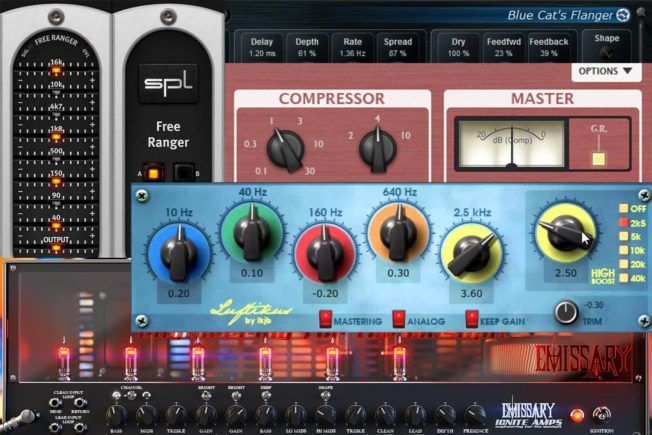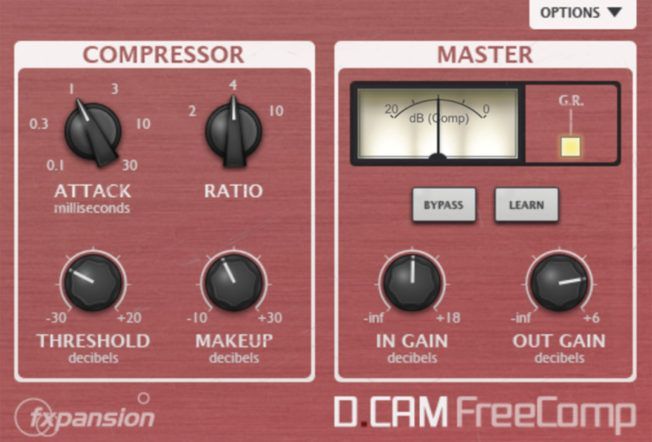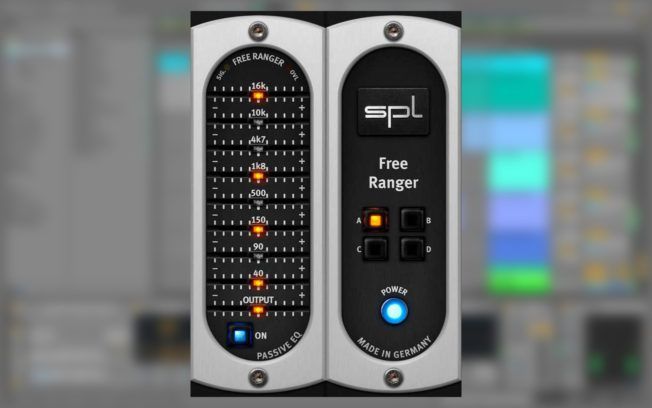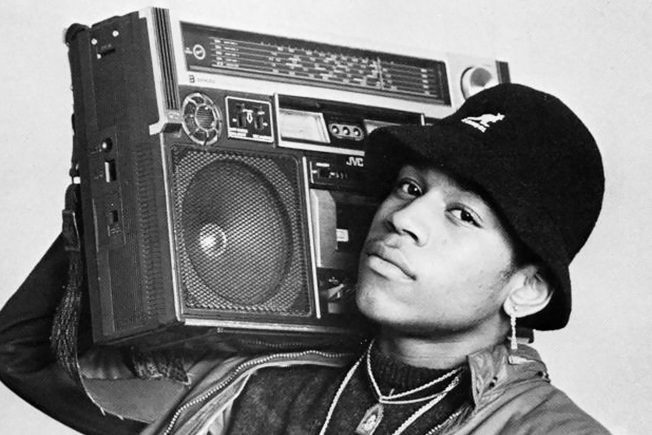This free VST plugins roundup features a digital emulation of an analog tube amplifier, an SSL style compressor, two analog-style EQs, and a versatile flanger.

Free VST Plugins
Each month we search the web for some of the music industry’s most essential freeware instrument and effect plugins. This list of free VST plugin downloads offers five modern tools for your arsenal. No need to spend a dime or waste time trawling the internet.
1. Ignite Amps | Emissary 2.0 Tube Amp

Emissary is a digital emulation of a custom hardware dual-channel guitar tube amplifier. It offers a wide tonal palette of amp distortion for any genre. Use it to add warmth, grit, and coloration to your sounds.
The new redesign features a versatile clean channel that ranges from subtle to slightly overdriven tones. While the brutal lead channel delivers more aggressive distortion. It also includes six free impulse responses.
2. lkjb | Luftikus EQ

The Luftikus EQ VST plugin is a digital adaptation of the analog Maag Audio EQ4. It sports five fixed half-octave bands and an additional high-frequency boost. It also offers mastering and analog modes.
The Luftikus does a fantastic job of boosting the high end to add color and clarity. You can also crank the ‘High Boost’ to bring vocals and other sounds into focus without sounding harsh or unpleasant.
3. DCAM | FreeComp Compressor

DCAM FreeComp is a circuit-modeled compressor VST plugin. It models the classic SSL console bus compressor design. Use it to “gel” subgroups and entire mixes while enhancing punch and definition. It also works excellent at creative sculpting, taming peaks in individual tracks, and creating pumping compression effects.
4. Blue Cat | Blue Cat’s Flanger

Blue Cat’s Flanger VST plugin is a versatile stereo flanger effect with its own special sound. It’s capable of adding subtle and smooth filtering effects or harsh and metallic tones. You can also apply it to almost any track. It sounds great on vocals, synths, guitars, and even drums.
5. SPL | Free Ranger EQ

The Free Ranger is a slimmed-down version of the Full Ranger-EQ from SPL’s EQ Rangers series. It features four highly useful bands: The 16 kHz center frequency band is great for adding pleasant brilliance; the 1.8kHz center frequency band can help bring out lead vocals and guitars or reduce harshness; the 150 Hz center frequency band adds warmth, making tracks fuller and fatter. Last, the 40 Hz center frequency band can either add some sub thump or reduces rumble.

Turn your passion for music into a Profession: Learn more about our Music School Programs!
MORE ARTICLES FROM THE ICON BLOG

FIND YOUR SOUND, HONE YOUR CRAFT:
Are you ready to turn music into a career? ICON prepares students to become music producers, composers, performers, recording artists, professional DJs, and entrepreneurs in the entertainment industry. Click below to get information about our award-winning programs:

